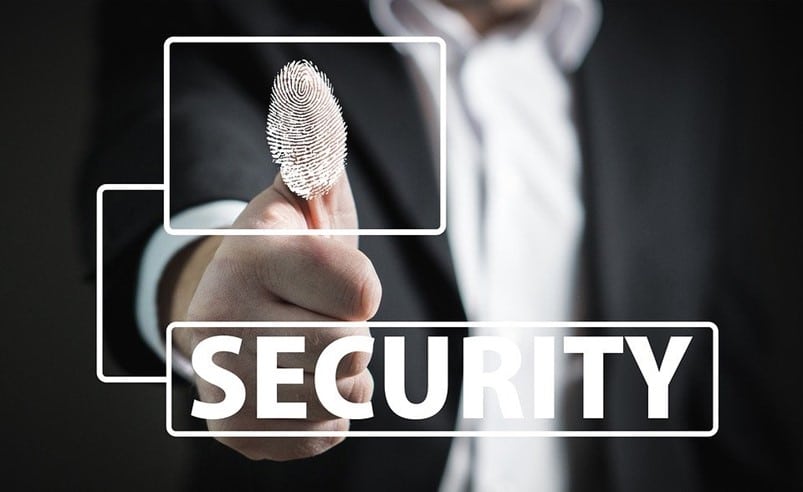The Need for a SOC and The Importance of Security Services in Business Networks
As organizations move to a higher technological plane, they face more significant challenges. Besides administration and operations, the security and threat matrix also evolves significantly. Therefore, organizations will need to invest considerably in cybersecurity systems to secure infrastructure and data adequately. Security Services such as SOC, SIEM, MDR, and EDR play essential roles in helping business networks handle such situations.
Business organizations will need to deploy a multi-pronged approach to confront the multiple threats that emanate from the digital world and compromise the confidentiality, integrity, and availability of critical data. There needs to be an ample presence of state-of-the-art technology and well-trained cybersecurity experts to meet such needs. As such are the circumstances, businesses and enterprises have begun to implement robust security systems such as SOC (Security Operations Center), SIEM, MDR, and EDR, as they can handle such challenges.

(Image Source: Pixabay)
What is SOC?
A SOC or Security Operations Center is mainly concerned with the organization’s overall cybersecurity, which it tries to accomplish through efficient threat detection and prevention, incident response, threat analysis, compliance, risk management, etc. A SOC is a dedicated platform solely responsible for the integrity and security of the organization’s information systems. It follows a single window approach for defending data and infrastructure against cyber threats. The primary functions of a SOC are:
-
Threat intelligence collection and correlation of information to establish context for incidents
-
Threat detection using specialized tools
-
Overall security monitoring
-
Alert evaluation and prioritization
-
Incident detection, prevention, and timely response to avoid further damage
-
Incident analysis to study threat patterns and severity to formulate better response methods
How is SOC Different From CSIRT?
There is much confusion in distinguishing between SOC and CSIRT (Computer Security Incident Response Team), and they are often considered the same. While the essential responsibilities and areas of operation of both the domains may overlap, SOC and CSIRT have distinct roles to play while complementing each other.
While overall cybersecurity is the purpose of SOC, CSIRT is concerned with specific incidents as incident management is its most crucial role. It conducts threat hunting and forensic analysis of threats with the help of tools like RCA (Root Cause Analysis) to develop better incident management strategies. CSIRTs either function as standalone units or report to SOCs. And the SOCs pass on threat intelligence to CSIRTs though the latter also generate intelligence
themselves.
Key Components of SOC
A SOC has three major components that have distinct roles in making the SOC function appropriately. It is the optimum action of the three components in unison that will decide the success of the SOC. They are:
-
People:
People are the most vital part of a SOC. No operation will succeed without well-trained experts and professionals. Therefore, it is tedious for the hiring manager to recruit the correct individuals. No amount of high-end solutions will ever be able to replace a SOC security executive or a manager.
-
Process
There are several steps towards approaching an incident, and SOCs will not engage all of them at once. Processes are case-based, and the circumstance dictates the best step forward. A few of the steps involved are:
-
Incident Triage Process
-
Incident Reporting Process
-
Incident Analysis Process
-
Incident Closure Process
-
Technology
As important as the other two components, technology ensures that the response is on top of the threat at any given time. The standard technologies that are used to counter cyber threats are:
-
SIEM (Security Incident and Event Management)
-
EDR/XDR (Endpoint Detection and Response/ Extended Detection and Response)
-
IDS/IPS (Intrusion Detection System/ Intrusion Prevention System)
-
Threat Intelligence Feeds
-
Vulnerability Scanners
What is SIEM?
Security Information and Event Management or SIEM is a cybersecurity system designed to collate data from multiple sources and analyze specific events that otherwise wouldn’t have been detected. Its functioning assists SOC significantly. SIEM centralizes the data logging capabilities, thereby providing a single point of reference for the SOC. It eases functionality and improves the effectiveness of threat research and response.
What is XDR?
Extended Detection and Response or XDR is an evolved version of the EDR (Endpoint Detection and Response). While EDR analyses only the endpoints across multiple sources, XDR widens the scope and includes endpoints, networks, servers, SIEM, etc. It provides a single window of information to the user, who will be able to establish a more comprehensive security strategy. XDR is a unified, single pane approach involving the entire operations board.
What is MDR?
Managed Detection and Response or MDR is often mistaken as a service. Instead, it is a managed service provided by a contracted service provider. Organizations hire vendors who provide MDR services to help them maintain secured networks at affordable costs. MDR is ideal for organizations with limited resources or lacking the requisite talent.
What is SOAR?
A SOAR (Security Orchestration, Automation, and Response) system constitutes technologies that enable the incident response team to collate information from various sources. For example, notifications from the SIEM systems are sent to the unit, which takes care of the organization’s security needs. SOAR leverages the combined capacity of the human intellect and state-of-the-art technology to help define standard incident response procedures.
Need for a Robust SOC for Organizations
Today, a robust approach to cyber threats is necessary as organizations lose substantial revenue and reputation due to data loss or theft. An effective SOC can be at the forefront of preventing such incidents by offering the following benefits.
-
Effective Incident Response: With the help of technologies like SIEM, the SOC will better prepare itself against cyber threats. Such incidents are likely to occur across multiple endpoints and affect a more significant portion of the network. SOCs enable organizations to deal with such threats with greater ease.
-
Centralization of Security Needs:
Consolidating the entire security paraphernalia to fight against cyber threats allows the organization to respond to newer challenges effectively. The SOC is also able, through consolidation, to save resources and direct them for better utilization.
-
Compliance and Auditing, Alerting and Reporting: Government regulations such as GDPR (General Data Protection Regulations), PCI-DSS (Payment Card Industry Data Security Standard), HIPAA (Health Insurance Portability and Accountability Act), etc. are stringent regarding data protection and information privacy. SOC manages these regulatory compliances by constant monitoring of the network, management of vulnerabilities, and response to incidents, thereby protecting the organization from huge penalties and losses.
-
Improved Collaboration and Communication: One of the pertinent features of successful SOC management is effective communication and collaboration within the team and across all the departments. They help spread awareness of cyber threats, thereby educating the staff and keeping them updated.
-
Improved Reputation: Organizations that are well protected are also trusted by their consumers and investors. SOC acts as a force multiplier by preventing data loss through malicious actors’ illegal penetration of networks and systems.
What Makes MDR the Best Choice for SMEs and SMBs
SMBs and SMEs are often short of security budget or do not have adequate resources to deploy for enterprise security. Sometimes, they could not afford a dedicated SOC to deal with security threats and issues. They can rely on MDR or Managed Detection and Response service in such situations, which offers similar services at an affordable cost. Following are the reasons that necessitate and justify having an MDR service.
-
Lower Cost: One of the constraints that SMBs and SMEs face is budget, and hence it is helpful to rely on an MDR service. Vendors provide able support at lower costs.
-
Expert and Experienced Professionals: SOC is a specialized domain, the expertise of which is lacking in-house in most SMBs and SMEs. This fact is another reason why MDRs are selected. They bring in domain experts.
-
Increased Attack Surface: Dependency on mobile devices, open-source code, etc., opens severe challenges for enterprises to handle effectively. MDR will be collating data from all platforms to efficiently analyze, detect, and prevent such threats.
-
A Plethora of Endpoints: In continuation of the point above, more endpoints will increase the probability of them being compromised. MDR service providers will bring the requisite expertise to prevent unauthorized penetration of systems and networks.
-
Compliance with Regulations: MDRs help businesses fulfill regulatory compliance, which requires continuous monitoring, vulnerability management, and reporting. Government regulations are particular about data protection, and any organization seen to be flouting the law is penalized.
What Should Organizations Look for in the Best Managed SOC Provider?
A SOC’s aim is comprehensive security. Many components must play in unison and in an optimum fashion to help it achieve that objective. Below are those significant factors that one must look for while going for a SOC.
-
One of the critical components of effective SOC operation is up-to-date software licenses. They can be easily obtained and do not cost the organization much.
-
24/7 Help and Remote and Onsite Support:
Satisfactory customer service is essential when there is an incidence. A vendor who responds to the client’s needs is the one to choose. SOC vendors who provide remote assistance are also a better choice.
-
When a disruption occurs, a backup should be available at hand for quick data recovery and business continuity. The SOC provider needs to have the requisite technology and resources to provide the same.
-
Websites and Web Application Monitoring:
One critical task of the vendor is to constantly monitor websites and web applications for any signs of spurious activities. Malicious actors use phishing techniques to trap unsuspecting visitors and steal their confidential information for nefarious purposes. The SOC vendor should be able to identify such threats.
-
Network Monitoring and Updates:
Continuous network monitoring is not merely a responsibility but a regulatory need, and it cannot fail. Therefore, network monitoring and reporting capabilities will have to be evaluated before the SOC provider is brought on board.
Final Words
By having a robust and effective SOC, organizations will be able to prevent any untoward security incidents that may affect their reputation and revenue. With advancements in technology, the sophistication of cyber threats has increased exponentially. Hence, it is necessary to constitute a response team that manages and responds to threats effectively and efficiently. Solutions capable of meeting such objectives satisfactorily, such as SOC, SIEM, MDR, and EDR, are the need of the day for business organizations of all sizes, be it multinationals or SMEs and SMBs.
References
-
Oualid, Z. (2021, July 10). What are the components of a security operations center? Get Secure World.
https://www.getsecureworld.com/blog/what-are-the-components-of-a-security-operations-center/
-
Gartner Glossary. Security Orchestration, Automation and Response (SOAR).
https://www.gartner.com/en/information-technology/glossary/security-orchestration-automation-response-soar
-
Landt, K (2020, August 13). 8 Important Factors to Look for in a SOC as a Service Provider. Cygilant.
https://blog.cygilant.com/blog/8-important-factors-to-look-for-in-a-soc-as-a-service-provider
-
Shea, S. (2020, November). 8 Benefits of a Security Operations Center (SOC). SearchSecurity.
https://www.techtarget.com/searchsecurity/tip/8-benefits-of-a-security-operations-center
-
CYDEF. (2020, November 5). Why MDR is Mission Critical for SMBs.
https://cydef.ca/blog/why-mdr-is-mission-critical-for-smbs/
-
Lindstrom, C. (2021, October 13). What are the differences between SOC and MDR? Onevinn.
https://blog.onevinn.com/what-are-the-differences-between-soc-and-mdr.
-
Netsurion. (2019, December 13). SOC-as-a-Service, MDR, and Managed SIEM. What’s the Difference?
https://www.msspalert.com/cybersecurity-guests/socaas-mdr-siem-defined/



